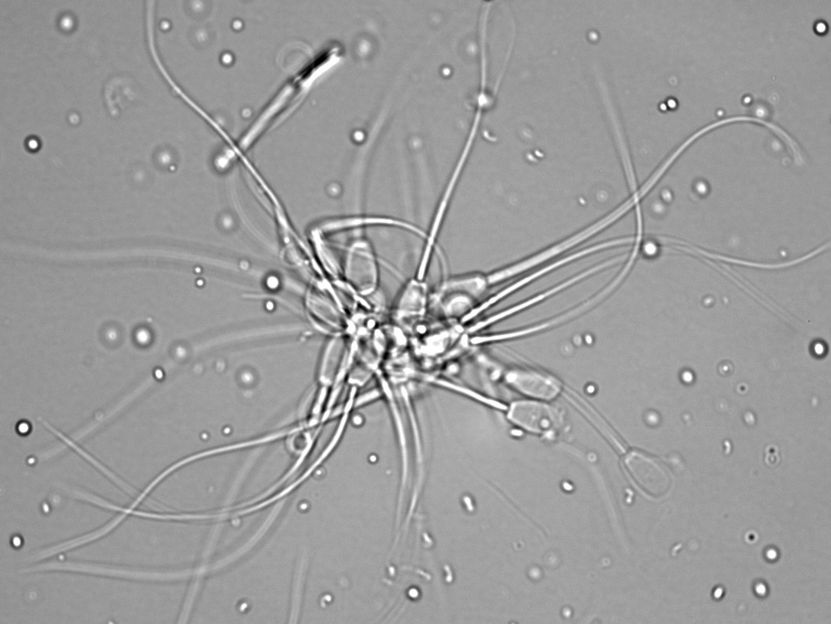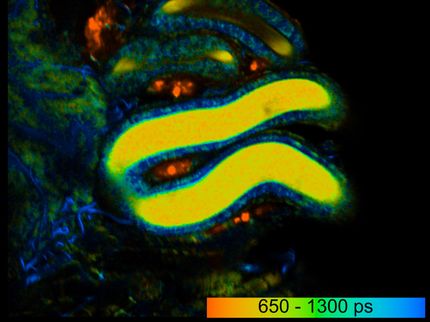Biologists examine sperm quality on the basis of their metabolism
Every tenth couple worldwide is affected by infertility. The reasons for this are manifold, but mostly well researched. Nevertheless, about fifteen percent of cases remain unexplained. A team of biologists at TU Dresden has now gained new insights into the metabolic properties that make up a good sperm cell.

Bovine sperm in bright-field microscopy with differential interference contrast.
(c) Dr. Veronika Magdanz
Thanks to the advanced possibilities, in vitro fertilization is part of everyday medical practice. The so-called swim-up method is a sperm purification method that is being used daily in andrology labs around the world as a simple step for in vitro sperm selection. This method accumulates the most motile sperm in the upper fraction and leaves sperm with low or no motility in the lower fraction by adding them to a culture medium. The reasons for the different sperm qualities are still poorly understood.
A team of biologists from TU Dresden has now compared bovine sperm from the upper and lower layers with regard to their metabolic rate, their motility and sperm tail length. In their study, they identified clear connections: the faster sperm selected by swim-up show higher metabolic rates and longer driving flagella than non-selected cells.
Dr. Veronika Magdanz, head of the study, explains the results as follows: "However, it is not quite as easy as that these sperm simply metabolize more. The stored energy is also lower in the selected sperm, which shows that they consume more energy reserves. Understanding the metabolism of the selected spermatozoa is important because certain metabolic pathways can also have a detrimental effect on the spermatozoa. For example, cell respiration in the mitochondria, one of the possible metabolic pathways, produces harmful oxygen radicals that affect the genetic integrity and cell functions of the sperm."
The results of the study are the first to provide a metabolic explanation for why the swim-up method selects sperm that appear to be functionally superior. These findings can be applied to all human and animal sperm and provide valuable new insights into the origins of life.
Original publication
Other news from the department science

Get the analytics and lab tech industry in your inbox
By submitting this form you agree that LUMITOS AG will send you the newsletter(s) selected above by email. Your data will not be passed on to third parties. Your data will be stored and processed in accordance with our data protection regulations. LUMITOS may contact you by email for the purpose of advertising or market and opinion surveys. You can revoke your consent at any time without giving reasons to LUMITOS AG, Ernst-Augustin-Str. 2, 12489 Berlin, Germany or by e-mail at revoke@lumitos.com with effect for the future. In addition, each email contains a link to unsubscribe from the corresponding newsletter.


















































